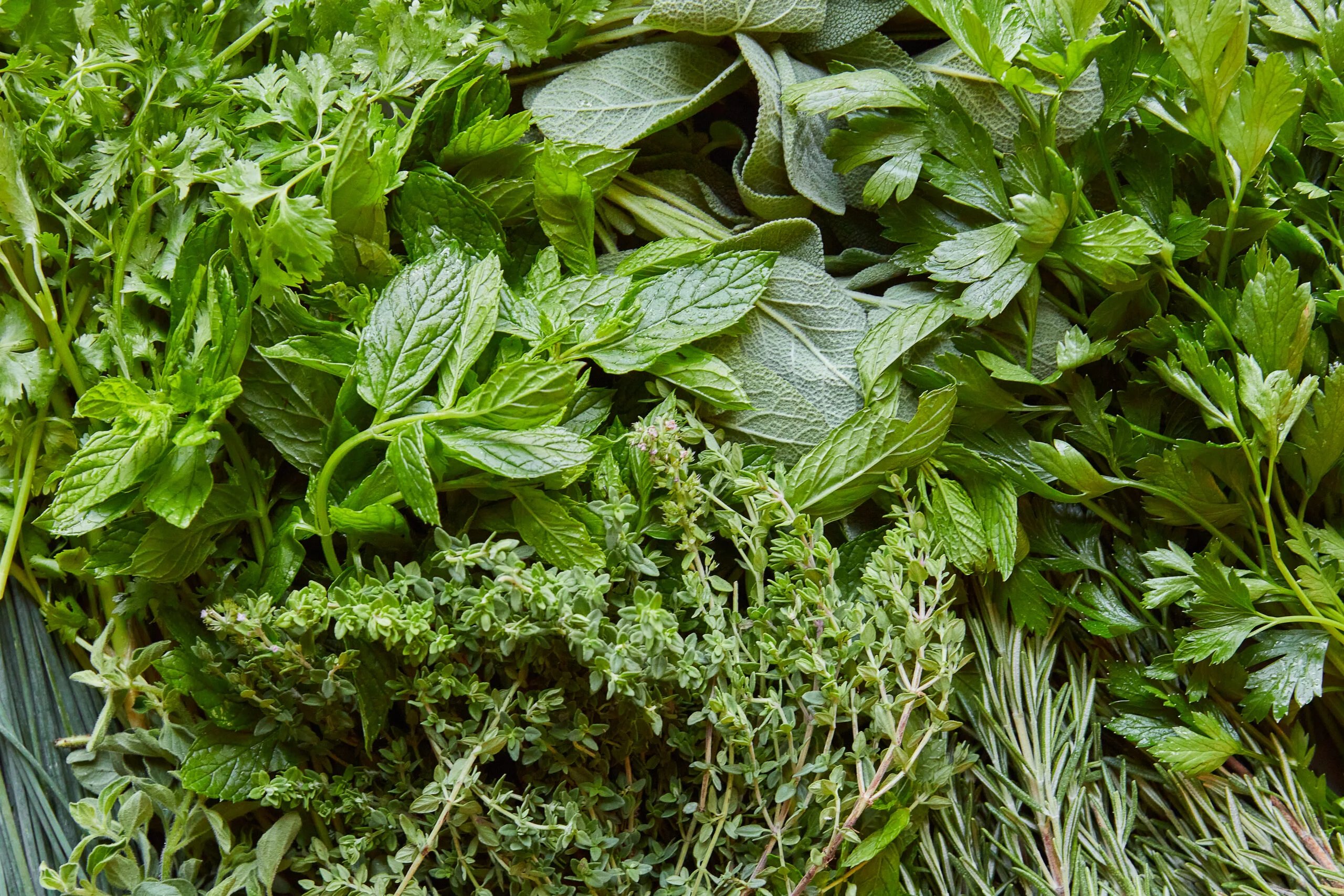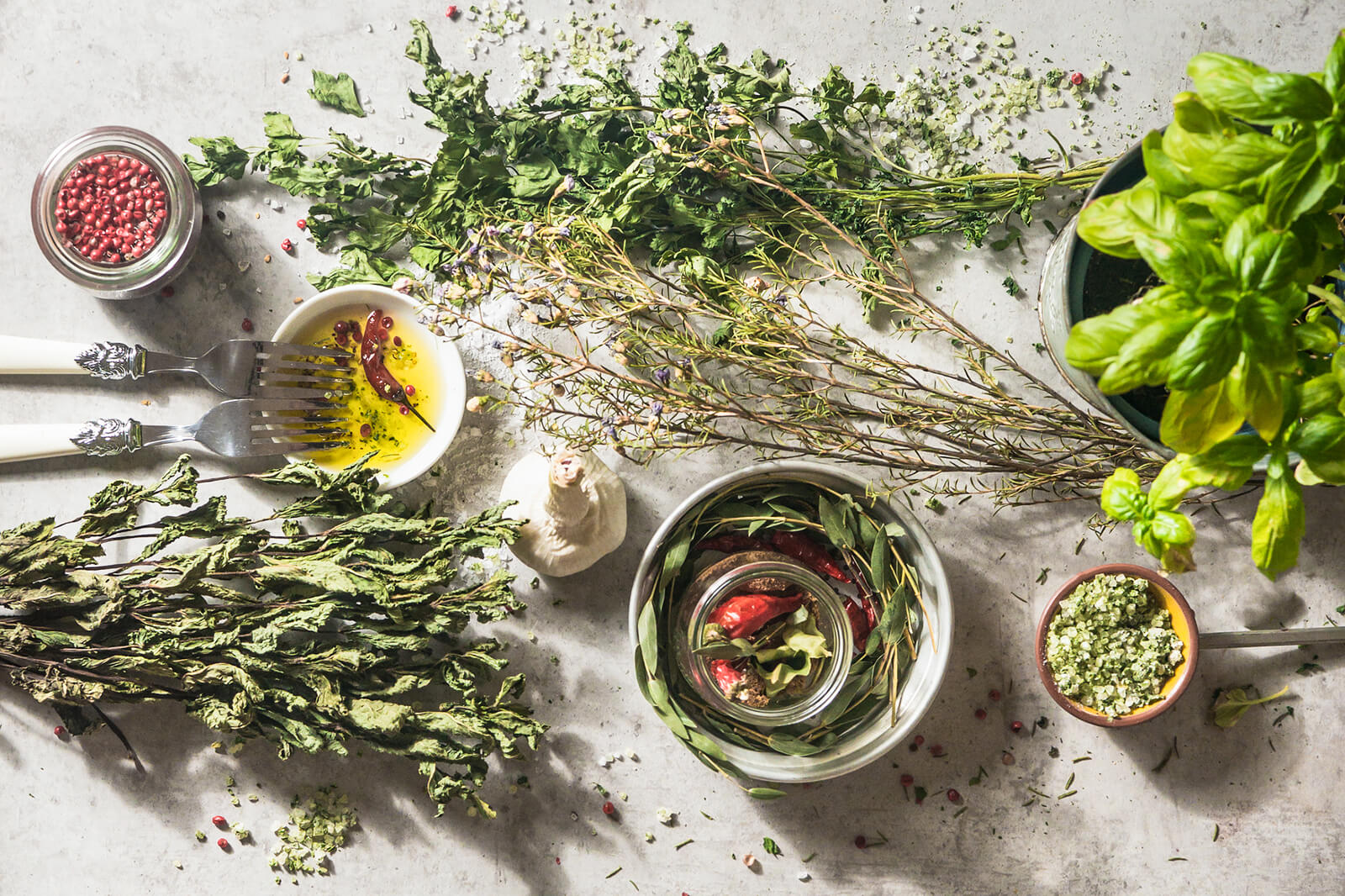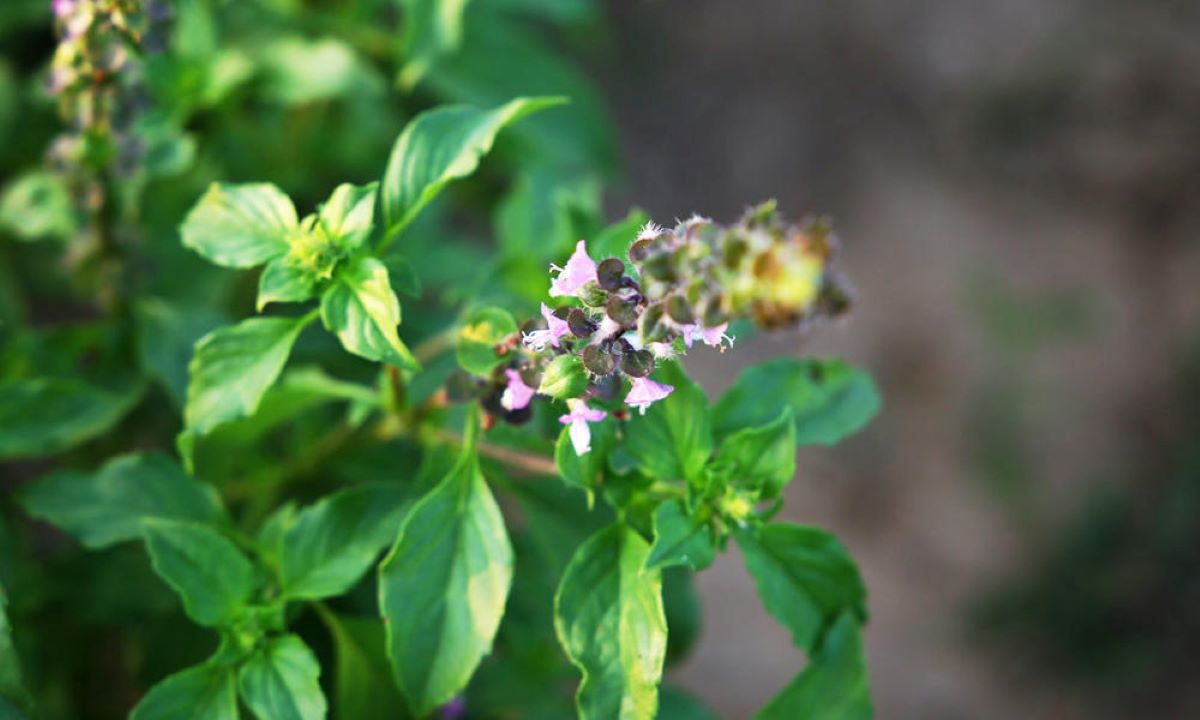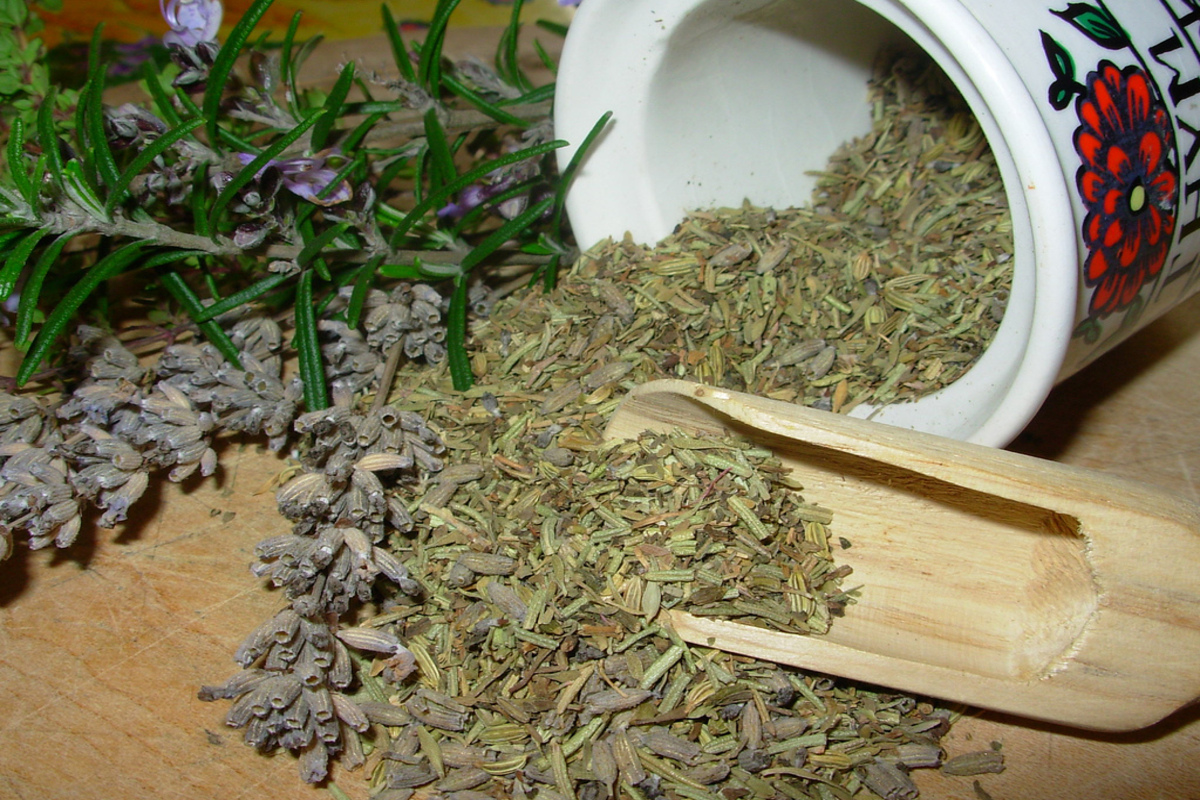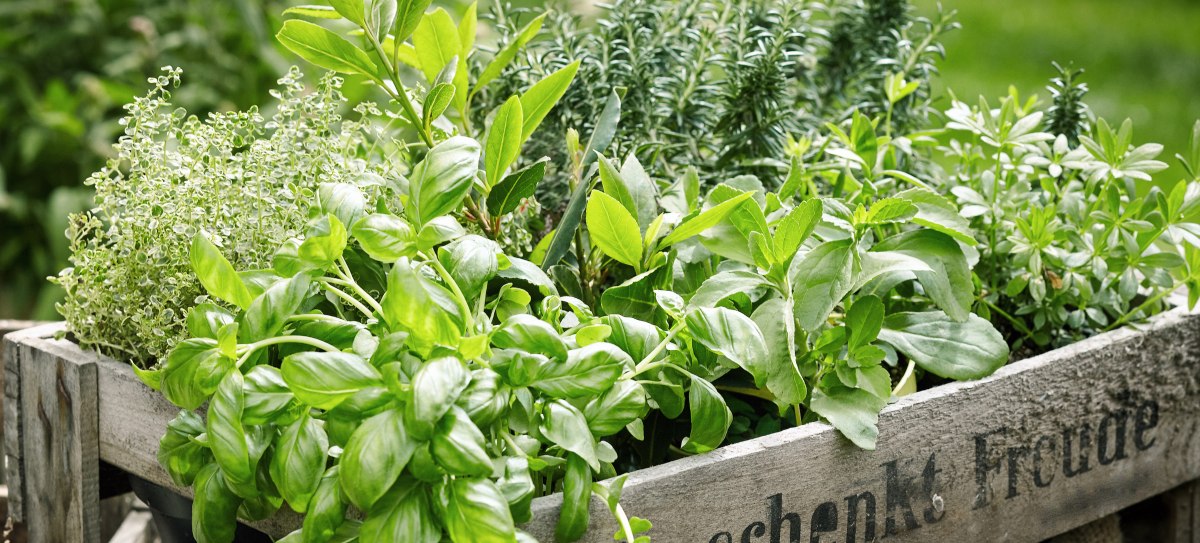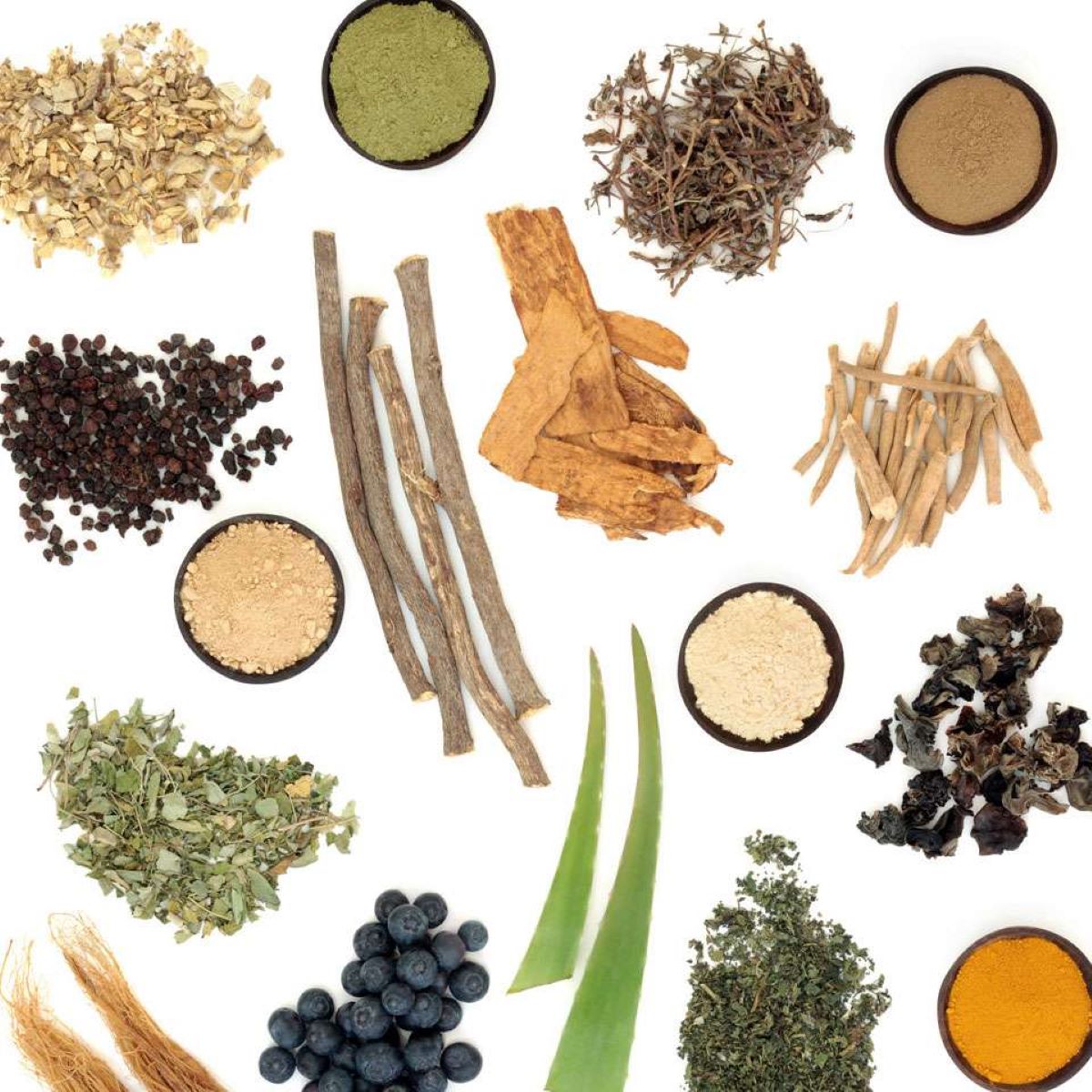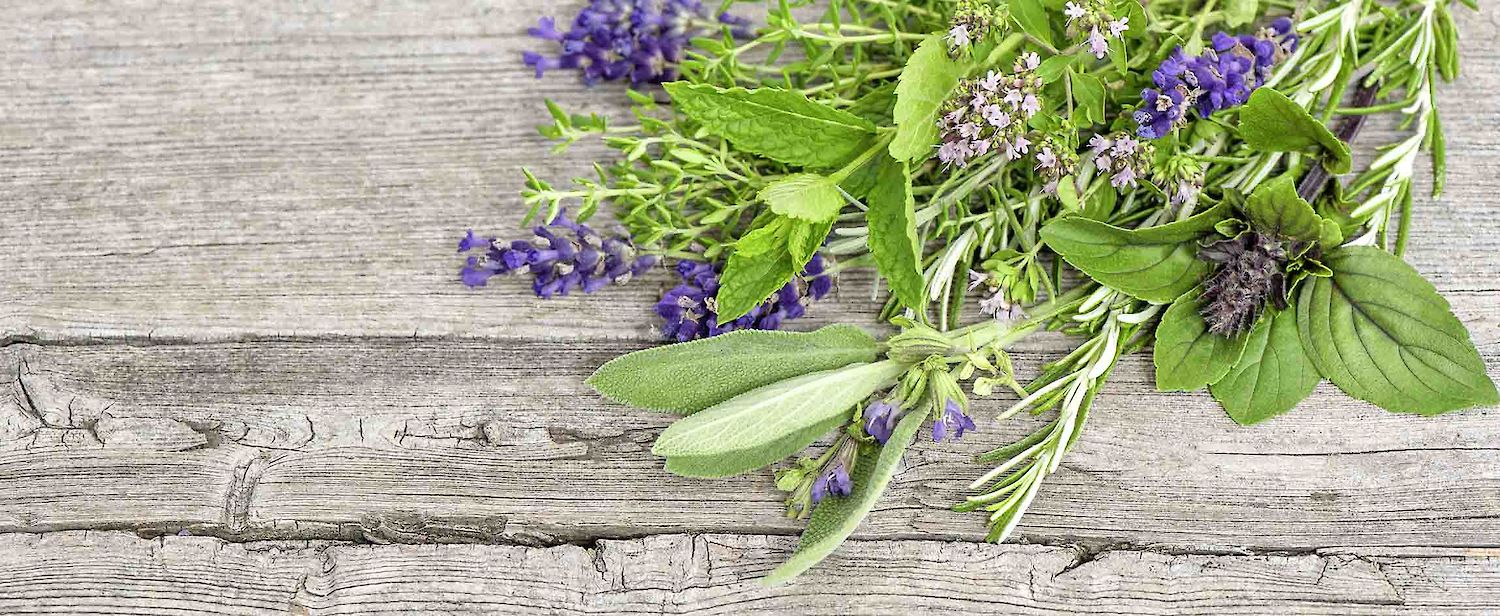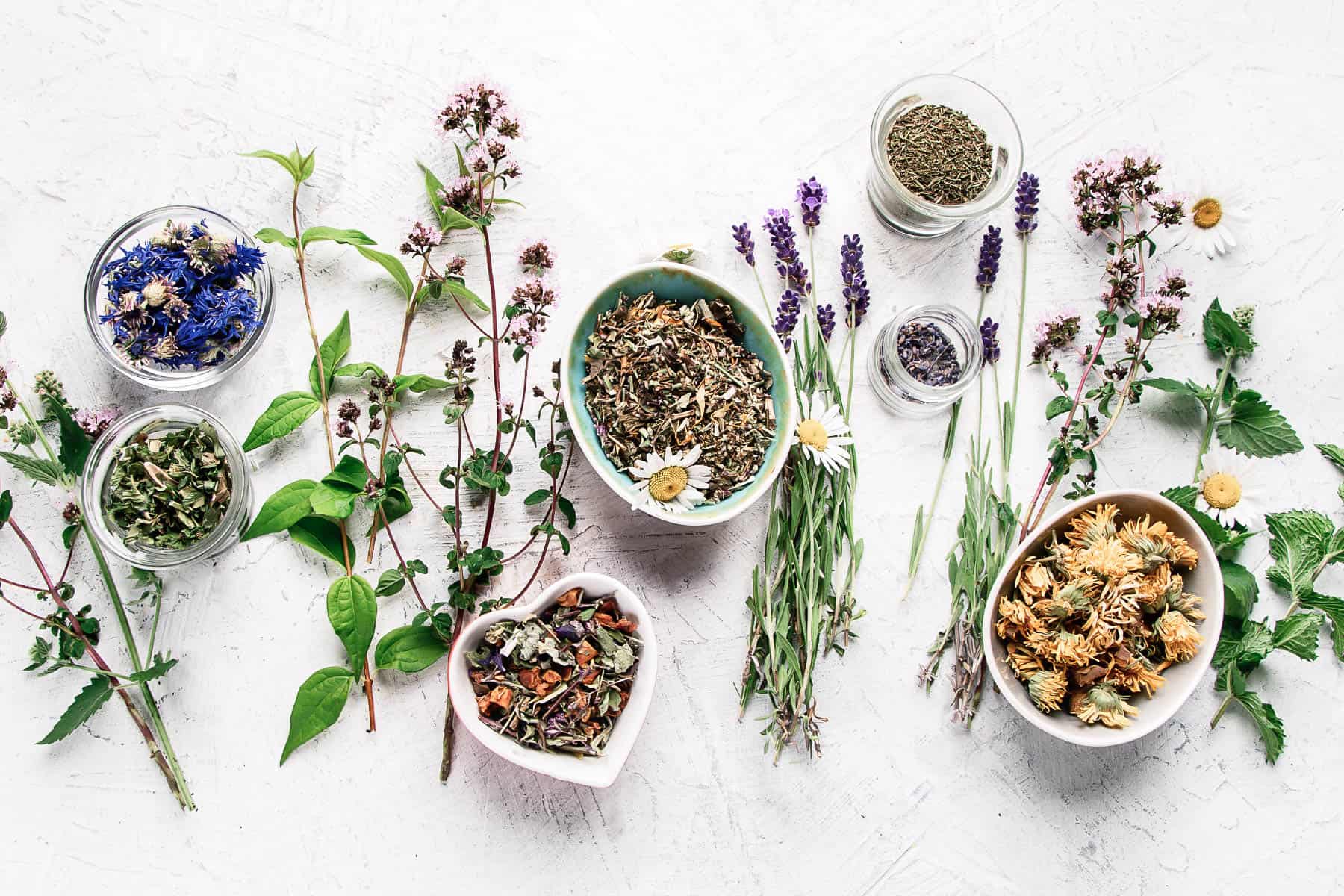Home>Gardening News and Trends>Latest News>What Are Herbs And Spices
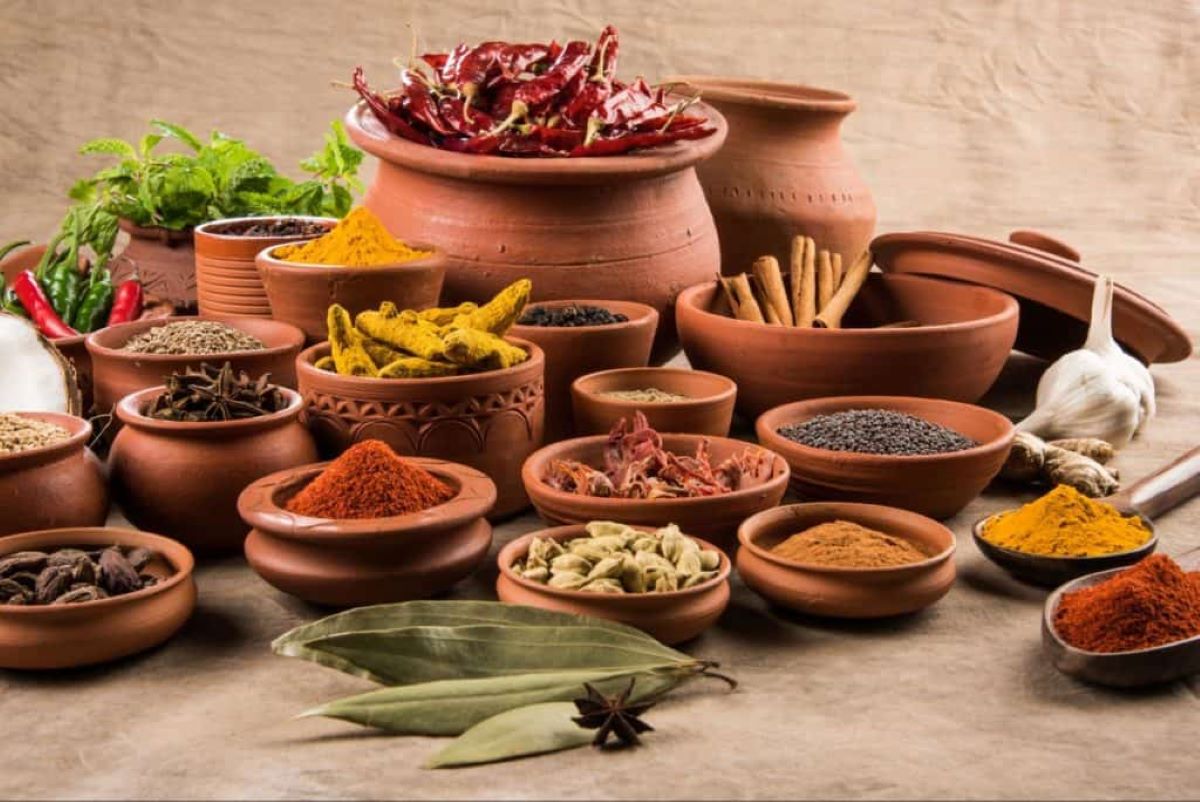

Latest News
What Are Herbs And Spices
Modified: January 22, 2024
Discover the latest news about herbs and spices, including their health benefits, culinary uses, and tips for growing your own herb garden. Learn how to enhance your dishes with natural flavors!
(Many of the links in this article redirect to a specific reviewed product. Your purchase of these products through affiliate links helps to generate commission for Chicagolandgardening.com, at no extra cost. Learn more)
Table of Contents
Introduction
When it comes to enhancing the flavors and aromas of our favorite dishes, herbs and spices are the secret ingredients that make all the difference. Not only do they add depth and complexity to our meals, but they also offer a myriad of health benefits. From the vibrant green leaves of basil to the fiery heat of chili powder, herbs and spices have been used for centuries to elevate the taste and nutritional value of food.
But what exactly are herbs and spices? In the culinary world, these terms are often used interchangeably, but they have distinct characteristics that set them apart. Herbs are derived from the green, leafy parts of plants, while spices are obtained from the bark, seeds, fruits, or roots of plants.
The differences between herbs and spices extend beyond their sources. Herbs are known for their delicate flavors and are often used in generous amounts, adding a freshness to dishes. On the other hand, spices are typically more pungent and intense, requiring careful measurement to avoid overpowering the dish with their strong flavors.
These culinary treasures are not only prized for their taste but also for their numerous health benefits. Many herbs and spices contain potent antioxidant and anti-inflammatory properties, boosting the immune system, aiding digestion, and even reducing the risk of certain diseases. Whether it’s a sprinkle of oregano on a pizza or a pinch of turmeric in a curry, incorporating herbs and spices into our meals can contribute to our overall well-being.
Herbs and spices have been a staple in culinary traditions and natural remedies for centuries. Learning how to utilize them properly can transform even the simplest meal into a flavorful masterpiece. In this article, we will delve into the world of herbs and spices, exploring their individual characteristics, popular uses, and tips for cooking with them. So, let’s embark on a flavorful journey and unlock the secrets of herbs and spices!
Definition of Herbs and Spices
Before we dive into the vast array of herbs and spices, it’s important to understand their definitions. While they are often used interchangeably, herbs and spices have distinct characteristics that differentiate them.
Herbs: Herbs are derived from the leaves of plants and are typically used fresh or dried. They are known for their aromatic properties and are used to add flavor to various dishes. Some popular herbs include basil, parsley, thyme, rosemary, and cilantro.
Spices: Spices, on the other hand, are obtained from the seeds, bark, fruit, or roots of plants. They are often dried and ground or used whole. Spices are known for their intense flavors and are used in smaller quantities compared to herbs. Common spices include cinnamon, cumin, turmeric, paprika, and ginger.
While the definitions of herbs and spices may seem straightforward, it’s important to note that there can be some overlap. For instance, seeds like coriander and dill are technically spices, but their leaves, known as cilantro and dill weed, are classified as herbs.
Herbs and spices are not only used in cooking but also in natural remedies, beauty products, and even spiritual practices. Their versatility and array of flavors and aromas have made them essential ingredients in cuisines across the globe.
Now that we have a clear understanding of what herbs and spices are, let’s explore their differences in more detail.
Differences Between Herbs and Spices
While herbs and spices both add flavor and aroma to dishes, there are several key differences that set them apart. Understanding these distinctions can help us make better choices when it comes to selecting and using these culinary ingredients.
Source: The main difference between herbs and spices lies in their sources. Herbs are derived from the leaves of plants, while spices come from various parts such as seeds, bark, fruits, or roots. For example, basil and parsley are herbs because we use their leaves, whereas cinnamon and cumin are spices since they come from the bark and seeds, respectively.
Flavor Profile: Herbs are usually associated with delicate and fresh flavors. They can be subtle or pungent, depending on the specific herb. For instance, basil has a sweet and slightly peppery taste, while rosemary has a strong and resinous flavor. Spices, on the other hand, are known for their more intense and robust flavors. They can add warmth, sweetness, or heat to dishes, such as the distinctive taste of cinnamon or the fiery kick of chili powder.
Usage: Due to their different flavor profiles, herbs and spices are used differently in cooking. Herbs are often added to dishes during cooking or used as a garnish, providing a fresh and vibrant note. They can be used in larger quantities and can withstand longer cooking times. Spices, on the other hand, should be used more sparingly since they have concentrated flavors. They are typically added earlier in the cooking process to allow their flavors to develop or used as a seasoning at the end. Too much spice can overpower a dish and make it unpleasantly hot or bitter.
Presentation: Another difference between herbs and spices lies in their physical form. Herbs are often used fresh, but they can also be dried for later use. They can be chopped, torn, or left whole, depending on the recipe. Alternatively, spices are commonly found in dried, ground, or whole form. Ground spices are easier to incorporate into dishes, while whole spices are often toasted or ground before being used.
Cultural Significance: Herbs and spices have played significant roles in various culinary traditions and cultural practices. Different regions and cuisines have their own preferred herbs and spices, which contribute to the unique flavors and characteristics of their dishes. For example, basil, oregano, and thyme are commonly used in Italian cuisine, while cumin, coriander, and turmeric are staples in Indian cooking.
Understanding the differences between herbs and spices allows us to better appreciate their individual qualities and utilize them effectively in our culinary endeavors. Now, let’s explore the diverse culinary uses of these flavorful ingredients.
Culinary Uses of Herbs and Spices
The culinary uses of herbs and spices are as diverse as the flavors they add to our favorite dishes. These aromatic ingredients have the power to transform bland meals into delicious and memorable culinary experiences. Let’s explore some of the common ways in which herbs and spices are used in the kitchen.
Seasoning: Herbs and spices are excellent natural seasonings, enhancing the taste of a wide range of dishes. Herbs like basil, thyme, and rosemary can be used to infuse flavor into sauces, soups, and stews. Spices such as cumin, paprika, and turmeric add depth and complexity to meat, vegetable dishes, and even desserts.
Marinades and Rubs: Creating flavorful marinades and rubs is made easy with herbs and spices. They can be combined with oils, citrus juices, or yogurt to create a flavorful marinade for meats, poultry, or vegetables. When used as a rub, herbs and spices form a flavorful crust on grilled or roasted items, infusing them with rich, aromatic flavors.
Baking: Herbs and spices are not limited to savory dishes – they can also elevate desserts and baked goods. Cinnamon, nutmeg, and cloves are commonly used in warming and comforting desserts like apple pie or gingerbread. Vanilla, mint, and lavender add a subtle floral aroma to cakes, cookies, and custards.
Garnishes: Fresh herbs make beautiful and tasty garnishes for a wide variety of dishes. They add a pop of color and freshness to salads, soups, and main courses. Sprinkling chopped parsley, cilantro, or chives over a plate of food not only enhances its visual appeal but also adds a burst of flavor.
Herb-infused Oils and Vinegars: Infusing oils or vinegars with herbs is a simple yet effective way to add flavor to dressings, sauces, and marinades. Popular combinations include rosemary-infused olive oil, thyme-infused vinegar, or basil-infused balsamic vinegar. These infused oils and vinegars can elevate the taste of salads, roasted vegetables, or grilled meats.
Herbal Teas and Infusions: Many herbs, such as chamomile, mint, and lavender, are commonly used to make fragrant and soothing herbal teas. They can also be added to hot water for infused beverages. These drinks not only offer a variety of flavors but also provide potential health benefits.
Preserving: Herbs and spices can also be used to preserve food. Drying herbs like thyme, oregano, or sage allows them to be used long after the growing season. Spices like cloves, cinnamon, and allspice are often used in pickling or preserving fruits and vegetables for long-term storage.
These are just some of the many culinary applications of herbs and spices. As you explore different cuisines and recipes, you’ll discover the endless possibilities of incorporating these flavorful ingredients into your cooking.
Health Benefits of Using Herbs and Spices
In addition to enhancing the taste of our favorite dishes, herbs and spices offer a host of health benefits. These natural ingredients are not only rich in flavor but also packed with various nutrients and compounds that can support our overall well-being. Let’s explore some of the health benefits associated with using herbs and spices in our cooking.
Antioxidant Properties: Many herbs and spices are hailed for their powerful antioxidant properties. Antioxidants help protect our cells from damage caused by free radicals, unstable molecules that can contribute to aging and chronic diseases. Some herbs and spices with high antioxidant levels include cloves, cinnamon, oregano, and turmeric.
Anti-Inflammatory Effects: Chronic inflammation is linked to numerous health conditions, including heart disease, diabetes, and certain cancers. Several herbs and spices possess potent anti-inflammatory properties. Ginger, garlic, turmeric, and rosemary are among the notable examples known for their ability to reduce inflammation in the body.
Improved Digestion: Many herbs and spices have long been used to aid digestion and promote gut health. For instance, ginger has been traditionally used to alleviate nausea and indigestion. Peppermint is known for its soothing effects on the digestive system, while fennel and coriander can help relieve bloating and gas.
Immune System Support: Some herbs and spices are known to support the immune system and help the body fight off infections. Garlic, for example, contains compounds that have been shown to enhance immune function. Echinacea, a herb commonly used in herbal remedies, is believed to stimulate the immune system and reduce the severity and duration of cold symptoms.
Metabolism Boost: Certain spices have been found to have metabolism-boosting properties, which in turn may help with weight management. Capsaicin, found in chili peppers, has been shown to increase metabolism and promote fat burning. Cinnamon may improve insulin sensitivity and regulate blood sugar levels, potentially benefiting those with diabetes or metabolic syndrome.
Heart Health: Several herbs and spices have been associated with heart-protective effects. Turmeric, for instance, has shown potential in reducing inflammation and improving cardiovascular health markers. Garlic has been linked to lower blood pressure and cholesterol levels, while oregano has antioxidant properties that may help prevent oxidative stress related to heart disease.
Cognitive Function: Some herbs and spices are believed to support brain health and cognitive function. Turmeric, for example, contains a compound called curcumin that has shown promise in reducing the risk of neurodegenerative diseases like Alzheimer’s. Rosemary has been associated with improved memory and concentration.
It’s important to note that while herbs and spices can offer various health benefits, they should not be viewed as a substitute for medical treatment. Their effects may vary among individuals, and it’s always advisable to consult with a healthcare professional for personalized advice.
Commonly Used Herbs
Herbs are a fundamental component of many culinary traditions, adding freshness, complexity, and aroma to dishes. Whether used in savory or sweet recipes, these herbs bring their unique flavors and characteristics to the table. Here are some commonly used herbs in cooking:
- Basil: Known for its fresh, sweet, and slightly peppery taste, basil is a staple in Mediterranean and Italian cuisine. It pairs well with tomatoes, cheese, and is a key ingredient in pesto.
- Parsley: With its mild, bright, and slightly bitter flavor, parsley is a versatile herb used as both a garnish and a key ingredient in various dishes. It can add a pop of freshness to salads, soups, and sauces.
- Thyme: This herb boasts a warm and earthy flavor, making it popular in Mediterranean and French cuisines. It pairs well with meat, vegetables, and is often used in stews, roasts, and marinades.
- Rosemary: Rosemary has a distinct pine-like aroma and a bold, resinous flavor. It is commonly used in Mediterranean dishes, especially with roasted meats, potatoes, and bread.
- Cilantro (Coriander leaves): Cilantro has a bright and citrusy flavor, often described as a combination of parsley and citrus. It is widely used in Mexican, Indian, and Thai cuisines, adding freshness to salsas, curries, and stir-fries.
- Mint: Known for its refreshing and cool flavor, mint is used in both sweet and savory dishes. It is commonly used in Middle Eastern cuisine, as well as in drinks, desserts, and salads.
- Oregano: Oregano has a robust and slightly bitter taste. It is a staple in Italian and Greek cuisines, often used in tomato-based sauces, pizzas, and grilled meats.
- Sage: Sage has a savory and slightly peppery flavor with hints of eucalyptus and citrus. It pairs well with rich and fatty meats, making it a popular choice for stuffing, sausages, and roasted dishes.
- Chives: Chives have a mild, delicate onion taste and are used primarily as a garnish or in dishes where a gentle onion flavor is desired, such as soups, salads, or baked potatoes.
- Dill: Dill has a tangy and slightly bitter taste with hints of anise. It is commonly used in pickles, seafood dishes, and creamy sauces.
These are just a few examples of the wide variety of herbs available for culinary use. Experimenting with different herbs can add depth and complexity to your dishes, elevating your cooking to new heights.
Commonly Used Spices
Spices are the backbone of many flavorful cuisines, adding depth, warmth, and complexity to dishes. They come from various parts of plants, such as seeds, bark, fruits, or roots, and offer a wide range of tastes and aromas. Here are some commonly used spices in cooking:
- Cumin: Cumin seeds have a warm and earthy flavor with a hint of smokiness. They are widely used in Indian, Middle Eastern, and Mexican cuisines, adding depth to curries, stews, and spice blends.
- Cinnamon: Cinnamon is known for its warm and sweet aroma, often associated with baked goods and desserts. It can also be used in savory dishes like stews or lentil dishes.
- Turmeric: Turmeric has a vibrant yellow color and a slightly bitter, earthy flavor. It is a key ingredient in many curry dishes and is known for its potential health benefits and anti-inflammatory properties.
- Paprika: Paprika comes in various forms, ranging from mild and sweet to smoky and hot. It is commonly used in Hungarian, Spanish, and Mediterranean cuisines, adding color and flavor to dishes like soups, stews, and spice rubs.
- Ginger: Ginger has a warm and spicy flavor with a hint of sweetness. It is widely used in both savory and sweet dishes, including stir-fries, curries, teas, and baked goods.
- Cayenne Pepper: Cayenne pepper is known for its fiery heat and is often used to add spice to dishes. It can be incorporated into hot sauces, marinades, chili, or any dish that requires some extra heat.
- Black Pepper: Black pepper is one of the most commonly used spices globally, adding a pungent and mildly spicy flavor to dishes. It goes well with almost any savory dish and is often used as a finishing touch.
- Coriander (seeds): Coriander seeds have a warm, citrusy, and nutty flavor. They are commonly used in both whole and ground form in various cuisines, including Indian, Middle Eastern, and Mexican.
- Nutmeg: Nutmeg has a distinct warm and slightly sweet flavor, often associated with desserts and comfort food. It pairs well with both sweet and savory dishes, such as baked goods, meat dishes, and creamy sauces.
- Cloves: Cloves have a strong and spicy flavor with a hint of sweetness. They are commonly used in both sweet and savory dishes, such as gingerbread, mulled beverages, or as a spice in stews or curries.
These are just a few examples of the wonderful world of spices available to add depth and flavor to your cooking. Experimenting with different spice combinations can elevate your dishes to delicious new heights.
Tips for Cooking with Herbs and Spices
Cooking with herbs and spices can transform ordinary meals into extraordinary culinary creations. Here are some tips to help you make the most of these flavorful ingredients in your cooking:
- Start with Fresh and Quality Ingredients: For the best flavor, use fresh herbs and spices whenever possible. Opt for high-quality products to ensure optimal flavor and potency.
- Experiment and Blend: Don’t be afraid to experiment with different combinations of herbs and spices. Try blending flavors to create unique spice blends that reflect your personal taste preferences.
- Timing is Key: Add fresh herbs toward the end of cooking for the most vibrant flavor. On the other hand, spices often benefit from being added earlier in the cooking process to allow their flavors to develop and meld with the other ingredients.
- Balance and Layer Flavors: Achieve a harmonious balance of flavors by using herbs and spices to complement other ingredients in the dish. Start with small amounts and taste as you go, adjusting the seasoning gradually until you achieve the desired taste.
- Toast Whole Spices: For a more intense flavor, consider toasting whole spices before grinding or using them. Dry-toast the spices in a pan over low heat until fragrant, and then grind them as needed.
- Store Properly: To maintain the freshness and potency of herbs and spices, store them in airtight containers in a cool, dark place. Avoid placing them near the stove or in direct sunlight.
- Make Infused Oils or Butters: Infusing oils or butter with herbs and spices is a great way to add flavor to your dishes. Simply heat the oil or melt the butter with your chosen herbs and spices, strain, and use as desired.
- Consider Flavor Affinities: Familiarize yourself with flavor affinities, the pairing of certain herbs and spices with specific ingredients. For example, basil and tomatoes, rosemary and lamb, and cinnamon and apples are classic combinations that work well together.
- Balance Heat and Spice: If you’re using hot spices like cayenne pepper or chili powder, be mindful of the amount you add to avoid overwhelming the dish with heat. Gradually add small amounts and taste as you go.
- Don’t Forget about Dried Herbs: Dried herbs can be a convenient alternative when fresh herbs are not available. Keep in mind that dried herbs are more concentrated, so use them in moderation to avoid overpowering the dish.
Remember, cooking with herbs and spices is an art that allows you to unleash your creativity in the kitchen. As you gain experience and confidence, you’ll develop a sense of their flavors and how they can enhance your culinary creations.
Conclusion
Herbs and spices are the magical ingredients that can elevate our cooking to new heights. They not only enhance the flavors and aromas of our favorite dishes but also offer a myriad of health benefits. From the delicate freshness of herbs like basil and parsley to the bold spiciness of spices like cumin and paprika, these culinary treasures have a place in kitchens around the world.
Understanding the differences between herbs and spices, their unique characteristics, and how to use them effectively can empower you to create delicious and memorable meals. Whether you’re preparing a hearty stew, a vibrant salad, or a comforting dessert, herbs and spices allow you to explore endless flavor possibilities.
As you embark on your culinary journey, remember to choose fresh and quality ingredients, experiment with different combinations, and balance flavors to achieve harmony. Don’t be afraid to explore new herbs and spices, try different cuisines, and embrace the world of flavors that these ingredients offer.
Whether you’re a seasoned chef or a home cook, incorporating herbs and spices into your cooking can bring immense joy and satisfaction. So, be adventurous, have fun in the kitchen, and let your taste buds be your guide as you create delightful dishes with the power of herbs and spices.
